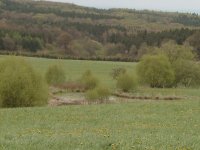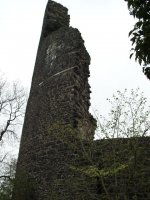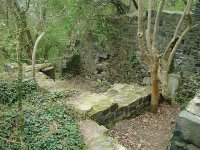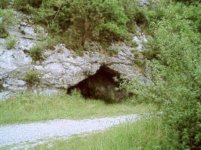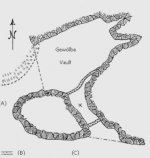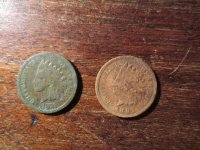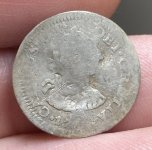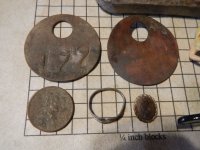- Jan 11, 2004
- 117
- 119
- Detector(s) used
- Goldpic,XP ,
- Primary Interest:
- All Treasure Hunting
Rudolf Patzwaldt
81827 München
„Can the „Rhinegold“ be found in Rheinbach-Loch near Bonn?“
„my two treasures!“
Anna and Katharina Patzwaldt.
„Can the „Rhinegold“ be found in Rheinbach-Loch near Bonn?“
Until the year 1983 the Nibelungs seemed nothing more to me than a compulsory and torturous topic for high school students, and I did not find it worthy of any further notice. To my taste, there were too many wild fantasies that had permeated the Song of the Nibelungs, too. But one day I was recommended the remarkable book „Die Nibelungen zogen nordwärts“ by Heinz Ritter. This work investigates the fall of the Nibelungs as it is described in the nordic Thidrekssaga. Up to that date I had already developed an interest in the history of Romans and Franks in the Rhineland as well as I took an interest in the history of mining - maybe that is all related to my being born in Munich but growing up in Essen. But now I began to concentrate on the Nibelungs, my studies always being rather monetary in nature, though. What was it with this famous „hoard of the Nibelungs“, the so-called „Rhinegold“? Nobody in their right mind throws away a hoard of such gigantic proportion, without which the Nibelungs' story would hardly have been worthy of being told over the course of the centuries. Still, the famous monument in Worms would have us believe that all the treasure had been dumped in the floods of the Rhine river. But this madman's myth of the Rhinegold having been lost forever makes no sense at all unless you want to use it in the opera house (you may hear Wagner's Rhine Maidens calling here), However, this whole mystery gave me reason enough to research into the whereabouts of the mighty hoard that the whole legend revolves around. Many times did I study the book by Ritter and read the Thidrekssaga alongside the Edda (translated by Genzmer) and the Song of the Nibelungs (translation by professor Simrock, Bonn). Every time I have considered these sources as equals, taking an unprejudiced look at all of them. I have paid special attention to comparing topographic data with the statements on the whereabouts of the hoard, trying to relate them to each other in a sensible way. In this article, I want to share some of my findings.
The Neffelgau, the „Dwarves“, and their Treasure
As for the origins of the Nibelungs and their hoard, we may best consult the Edda. The Edda reports (see „Reginsmol“, translation by Henry Adams Bellows) that the treasure originally belonged to the dwarf race of the Nibelungs. Ritter now suspects that these Nibelungs are name-saints of the town of Neffelbach in the surroundings of Zülpich in the Rhineland, but there are no other hints in that direction. Still it is indeed the case that the source area of the river Neffel contains the largest unified mining area, used in Roman times already, that the Rheinisches Landesmuseum in Bonn has ever examined (and Ritter did not know this, as he would have certainly mentioned it then). Undoubtedly, miners had been exploiting the area over an extended period of time in antiquity. Up to today, local lore has it that in the source area of the Neffel there once lived „underground people“ whose leader was a king named Niff. This, too, is a fact that Ritter was apparently completely unaware of. Another fact, this time geographical in nature, is that the Neffel rises to the surface with a constant temperature of 8 degrees Celsius, and it does so even in the coldest of winters. Therefore, the river freezes over only after a few hundred meters of unimpeded flowing. At air temperatures below 8 degrees Celsius, the source area of the Neffel is constantly covered with fog, which one can still witness today. Now to see the miners in the adjacent mining area (so-called „dwarves“) walking ghostlike through the mist with their lamps must have aroused the imagination of the old folks livin here to quite a remarkable extent. Besides, in the vicinities of the town of Berg near Nideggen, archaeologists have discovered and excavated industrial furnaces used in early Roman metallurgy. Although contemporary metallurgists are not unanimous on this, it can be hypothesized that even very early on, lead and silver were separated in the Neffel source area (H. v. Petrikovits, Rheinische Geschichte, Vol. I, p. 130). The locals in the Nideggen area, especially those from Berg and its surroundings, also point out that the forester's house, located only a few hundred meters above the source of the Neffel, where the steep bank of the river Rur drops, is suspected to mark the spot where Aduatuca was, the main seat of the Celtic tribe of the Eburones. It was here that around 53 BC, Ambiorix, a prince of the Eburones, succeeded to defeat one and a half legions of Julius Cesar's army, resting for the winter in his realm. Under the pretence that the honour of Rome had to be restored, Cesar had the whole Eburone area raided and marauded, once that Aduatuca had finally been conquered. The battles most certainly took place in the Eifel mountain range and in the lowlands of the Cologne, Jülich and Zülpich area (H. v. Petrikovits, ibid., p. 50). Only with great difficulties was Cesar able to conquer the Eburones' main town of Aduatuca as its geographical properties made it attackable from only one side (Caesar, The Gallic Wars, Book VI). In any case, the topological structure of the area between the source of the river Neffel and the bluff of the river Rur are astonishingly similar in detail to the description that Caesar gave of the location. It seems though that more than he had in mind the honour of Rome, Caesar was interested in the hoard of the Eburones which he, however, could not lay his hands on. With much certainty, the wealth of the tribe had already been hidden away carefully before Aduatuca was conquered. It is particularly tempting to think that the hidden treasure was then discovered by the mining people („dwarves“) working in the area some time later. That would quite literally lift the mist from the mythological beginnings of the treasure belonging to the „dwarf race of the Nibelungs“, as their hoard could substantially consist of the lost treasure of the Eburones.
Where was „Regin's Smithy“ located?
According to the Edda, the dwarven hoard fell to one Hreidmar, whose sons could not agree on how to divide up their heritage. One of these sons was called Regin. In Germanic, this is a telling name which can be rendered as „he who gives good counsel“. In modern use we know this name as Reinhard or Reiner. However, in modern Rhenish language it is still permittable to call someone by the old name of „Rein“ who would usually go by the name of Reiner. We will have to keep this spelling in mind - „Rein“ indicating Regin - when we discuss the hiding place of the hoard. Now Regin was a blacksmith, and he was to become the foster father of Sigurd/Siegfried. His brother Fafnir, who was called a „dragon“, „worm“, or „serpent“ conned Regin out of his rightful part of the hoard they inherited from their father. Maybe it was in opposition to the wise counselor Regin that Fafnir was said to be false and cunning and to speak with „forked tongue“. The different names that the two brothers were given at least allow for interpretations of their opposing characters. Siegfried, who had been equipped with the mightiest sword by Regin (called Mime in the Song of the Nibelungs), was talked into slaying the „dragon“. But, quite cleverly, Siegfried did not stop there, but instead he killed both brothers, thus becoming lord of the treasure. As for the whereabouts of the hoard, the Edda also states that the Burgundians (named Gjukungs here) took possession of the treasure after Siegfried was murdered. His slayer Hagen was obviously opposed to murdering Siegfried because of greed or other base motives, since he expressly asked the kings whether they wanted to kill Siegfried because of the „gold of the Rhine“ (Sigurtharkvitha En Skamma, verses 16 and 17). No, is the answer, the murder is ordered on grounds of the state: Siegfried had publicly declared to have slept with Brunhild before Gunter. Therefore reasons of honour demand Siegfried´s death, not mere greed. At least that is what is said – because still it was apparently paramount to prevent Kriemhild from inheriting the hoard. Kriemhild, as a woman, was not allowed to possess land, but she could have inherited goods such as the treasure. The question is, however, why Genzmer’s translation already talks of „the gold of the Rhine (Rhein)“? We have to note here that he spells „Rhein“ with an „h“! This is hardly explainable, because it was only long after Siegfried’s death that the hoard was said to have been dumped into the river, thus turning into the mythical „Rhinegold“. At this point, however, the reference to the large German stream does not make any sense at all, at is it completely out of the chronological order of events. But apparently this contradiction has escaped everybody’s notice so far. None of this has been remarked upon in any interpretation of the Edda, so that it appears that no one has even paid the slightest attention to this so far. If we assume, however, that this mention is made in reference to „Regin's gold“ (Rein’s gold), the Edda would be correct. But then any reference to the noble river would be totally misplaced here. If the legends indeed have their origin in the Cologne language area, we must also consider that the Ripuarian-Frankian language (the Cologne language of today), according to Prof. Adam Wrede, does not have a sound corresponding to high German „g“. The substitute sound is a “j“. The “good” water of Cologne is therefore not said to be „gut“, but pronounced „joot“. „Günter“, in this language area is pronounced “Jünter“. The underlying reason is the same sound shift that has turned the German word „Tag“ into the English word „day“, if spelled with a „y“ instead of a „j“. What is the significance of all this? Now because of this shift the name of Regin would be rendered as Rejin or Rein here. Most unfortunately now, this very word received an additional „h“ in Genzmer's translation of the Edda, so that the name of Regin (Rein) was turned into the name of the river Rhine (Rhein) and was thus given a completely different meaning. Maybe it was the association with the „Rhinegold“ of the Song of the Nibelungs that influenced Genzmer in his translation, with all the romantic views only the 19th century could provide. The name of the river Rhine, we must note, has always been pronounced as „Ring“ in the Cologne area. Most probably, now, this misplaced „h“ could be the key to where the treasure really lies!
What does the „Rhine river“ have to do with Siegfried's death?
What is most remarkable in topographical terms is, that the Edda renders a completely useless hint as to the place of Siegfried's (Sigurth’s) murder. It says here: „Slain was Sigurth south of the Rhine“ (Brot Af Sigurtharkvithu, verse 5, translation by Bellows). Once again we find the Rhine in this translation (in Genzmer’s German version it is the river Rhein with an „h“ instead of Rein/ Regin). Now south of the Rhine is a completely pointless designation, as the river Rhine runs from the south to the north of Germany. So south of what? South of Wesel, south of Cologne or Mainz? Why should a reference like that be at all useful? If we consult the Song of the Nibelungs, in contrast, the only geographical hint we find is that Siegfried was slain by a „cold well“ (in German „kalten Brunnen“). As far as the Nibelungs’ hoard is concerned after the Gjukungs had taken possession of it, the Edda states nothing at all about its whereabouts. The only inferences one can make can be drawn from the frequently analyzed scene in which Hagen is questioned about the hoard. In all the manuscripts of the Thidrekssaga, Hagen is said to state before he dies that the treasure is in Siegfried's cellar, the place of which is secured by certain keys. Allegorically speaking these „keys“ may hint to some kind of encryption. Be that as it may, the mention of a cellar is a clear indication of a subterranean hiding place, and no mention is be made of any kind of river or „Rhinegold“. Heinz Ritter considers the hoard to be located in a cave in Westphalia (in the „Hohler Stein“ near Kallenhardt in the Sauerland area), and he does so on the basis of the so-called story of Aldrian's revenge, that is appended to all the Thidrekssaga manuscripts. But we must note that the story only commences once the men from Soest have claimed to tell a true story. It can therefore be counted as somewhat dubious. In addition to that, none of the other sources state that the treasure had been carried on the way to Kriemhild, but certainly that would have been noted. It is highly unlikely that one would have retrieved the treasure from its hiding-place, just to play it into Kriemhilds's hands! It seems that Ritter should have taken a more critical look at his sources, or else should have taken other sources into consideration, too. In the story of the fall of the Nibelungs, as stated in the Edda, Hagen relies to Kriemhild's question for the location of the treasure, that “wolves aged and grey-hued” and “black-coated bears“ would rather have the treasure than her (Atlakvitha En Grönlenzka, verse 11). This is also a hint to a subterranean hideaway, as wolf and bear are typical cave-dwellers, in zoological terms. No Rhinegold in sight! Even according to the Songs of the Nibelungs (verse 2442), Hagen states to Kriemhild that after the murder of the Burgundians there was no one besides god and himself who knew where the hoard lies. As for Kriemhild, it „shall ever be hid from” her („verhohlen“ in Simrock’s translation). This expression – which in German reminds one of the words Höhle (cave) and Hehler (fence, receiver of stolen goods) – would not have been used by Hagen if he had dumped the treasure into the Rhine waters. Besides, the word „verhohlen“ rather indicates a subterranean vault. Why now does the Song of the Nibelungs, on the other hand, state that Hagen „sunk it all at Loche in the Rhine” („sancte in da ze Loche allen in den Rin“)? Again we find the insertion of the „h“ (verse 1158)! And why does Simrock, in his German translation, render „senken“, with no apparent reason as „ver-senken“? Why the prefix? That is only explainable if the idea of the river Rhine is guiding one’s mind here. However, the word „sancte“ in the original source might as well indicate a solemn ceremony of consecration. Does not Hagen state that no one knows where the hoard is, except for god and himself? It has always been doubted that Hagen referred to the Christian God here, as in crossing the Rhine not long before, he slew a Christian priest. Because of its capitalization in the mid-Germanic language, the word „Loch“ can only indicate a place name, not just any hole (Loch) dug in the ground. But what if Hagen even alludes to the celtic underworld god of betrayal, Lug (in Germanic Loki), he who is the patron of Lyon (Lugdunum), as all readers of Asterix know? This god’s name is still resounding today when we talk of „lies and betrayal“ (in German „Lug und Betrug“), and he is patron to the word „Lüge“ (lie). In the Ripuarian-Frankian language area, we still say „Loch und Bedroch“ for „lies and betrayal“. „Sancte ze Loche in (den) R(h)ein“! That would have been really cunning, if Hagen had dedicated the hoard he stole from Kriemhild to the underworld god of betrayal. That way, his deed would truly have been sanctioned ( or „sanct“ioned). And just to note: miners, in their traditional wording, still call a sloping tunnel a „Gesenk“ in German.
Surprising Geographic Discoveries
One Sunday I happened to drive along the highway from Bonn to Zülpich — right through where the Thidrekssaga would suspect the historic Nibelungs to have had their territory. To my left, on a hill top, lay the ruins of castle Tomburg, the landmark of Rheinbach. Before me, on my right, I could see the sign indicating the highway exit „Rheinbach“ with its arrow pointing right, thus indicating the direction towards Bonn and the river Rhine. What a splendid contradiction! The arrow on the sign erroneously pointed to the river Rhine, although it was indicating the way to „Rheinbach“ town, which actually lay in the opposite direction. That morning, though, it was my investigation that should take a different turn. I asked myself, why the town to the left of the highway should carry the „h“ in its name. Historically speaking, the town of Rheinbach has never been on the Rhine at all! Must we suspect to see the same error here that crept into the translations of the Edda and the Song of the Nibelungs? And all this even in the name of a town that lies within the suspected realm of the historic Nibelungs? Now what happens with the old scripts if we, for once, set the town of Rheinbach for what later was rendered as the river Rhine in the translations? Could it be the same thing as with the Dunowe/ Danube? According to Ritter, this name actually indicates the Dhün, a tributary of the Rhine near Leverkusen. It is most plausible that the writers of the Song of the Nibelungs (as well as its modern translators) had no choice but to think of the river Rhine when they came across the name of Rheinbach, or rather, Reinbach. But if it is not from the river Rhine, where then does Rheinbach actually have its name from? This question would have to remain unanswered that morning. I, however, decided not to continue my travels to Zülpich, but chose to study the vicinity of Rheinbach — making use of nothing but an ordinary Shell road map at first. It took me about half an hour to arrive at the little township of „Loch“, which belongs to Rheinbach. Rheinbach-Loch: nowthis name truly resounds of „Ein Loch ze Rheine” in the Song of the Nibelungs. I parked my car in the center of the township to take a walk. My first glance fell on a street sign that pointed to a ravine and read „Alte Höhle“ (old cavern). Indeed, there were indications of subterranean places here. A few days later, a visit to the library of the Rheinisches Landesmuseum in Bonn confirmed that the name Rheinbach indeed stems from „Reginsbach“. Thus the first evidence by documents reads: Town on a creek (Bach), where the Frankish lord of the name of Regin must have had his seat. So originally it must have been Reinbach. Only in later documents, and without any apparent reason, the treacherous „h” has crept behind the first letter. In the land registry office in Bonn-Bad Godesberg I found hints that the ravine is indeed not named „Alte Höhle“ (or old cavern, as the street-sign says), but „An den Höhlen“ (by the caverns). However, as the locals of Loch state, there aren't any caverns known in the vicinity. Best of all, they claimed, the ravine itself (in German: „Hohlweg“) could be referred to here. But in Rhenish it would then have been more likely for the name to have been rendered without any preposition, for example as „Holle“ or maybe also as „Hölle“. Interestingly enough, the parcels of land above the ravine are called „Auf den Höhlen“ (on the caverns). Now if underneath the field there truly are caverns no one knows about anymore today, I would propose that it is here that we should start searching for the hoard of the Nibelungs. And in fact, I have been able to secure knowledge that indeed there are cavities underneath that field.
which is called Wormersdorf. Not only does that sound like the town of Worms on the river Rhine, that was later to become an imperial stronghold, but if you just leave away the ending „-dorf“, which only indicates a settlement, quite indisputably the name of „Worms“ will remain. According to Professor Mürkens from Swisttal, who has made himself an outstanding name in the scholarship of Rhenish place names, the name Wormersdorf comes from the old high German word „Wurmhari“, which means „dragon fighter“. Whether this means that someone fought like a dragon here or that he fought By the way, the ruins of the Rheinbach castle of Tomburg are located in a different part of town against someone dragon-like, will remain unsolved. However, the town of Worms cannot make any such claim in favor of its own claim to be the Nibelungs' seat. If you now direct your look „south of the Rhine“ - in the sense I laid out here, so „south of Rheinbach-Wormersdorf“(and a mere Shell road map is sufficient here again), you will find, in a distance of about 6 km bee-line, the township of Kalenborn. In Rhenish, this is nothing less than a „cold well“ or a „cold spring“. Could it be that Siegfried was slain here? The topology is right, and the location „south of the R(h)ine“, as is written in the Edda, makes sense and, for once, would also render an actual hint to a location. In Kalenborn, the Swist rises, a river that was already sacred to the Celts and which gave its name to the area surrounding Rheinbach named Swisttal. Especially the source area of this river, which even carries a heightened sense of holiness, would have been suitable to sanction a murder that was to be justified by higher motives. The curse of the holy place, tainted by a murder, has not (or yet not right away) hit Hagen. Thus, his murder found justification in the choice of such a dignified place.
Amazon Forum Fav 👍
Last edited by a moderator:




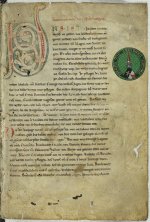
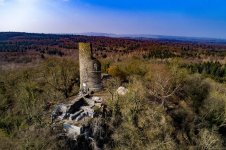
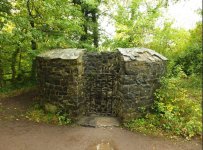
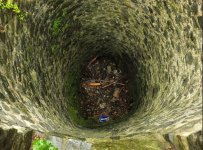
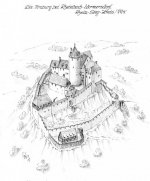
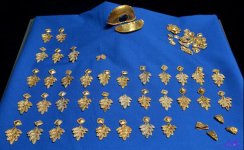
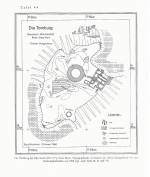
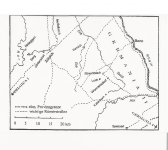
 see you guy´s there !
see you guy´s there !
